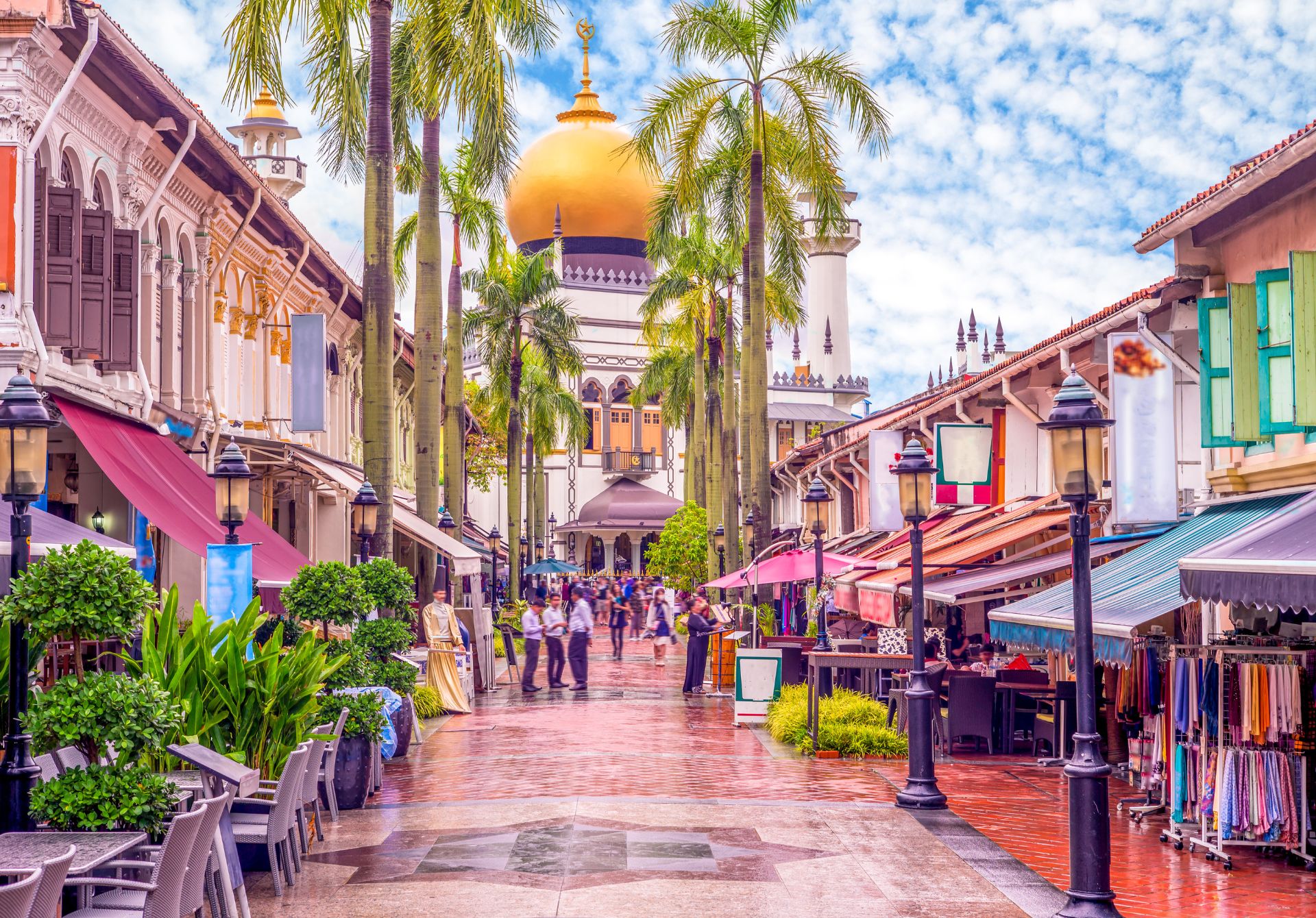Nestled in the heart of Singapore, Kampong Glam stands as a vibrant testament to the city-state’s rich cultural heritage. This historic district, once the seat of Malay royalty, has evolved into a bustling neighborhood that seamlessly blends tradition with modernity. In this article, we’ll explore the captivating history, cultural significance, and contemporary allure of Kampong Glam.
A Glimpse into History
Kampong Glam’s story dates back to the early 19th century when Sir Stamford Raffles, the founder of modern Singapore, allocated this area to the Malay, Arab, and Bugis communities. The name “Kampong Glam” itself is believed to be derived from the Gelam trees (Melaleuca cajuputi) that once grew abundantly in the area, prized for their medicinal properties and use in boat-making.
In 1824, Sultan Hussein Shah of Johor established his palace here, cementing Kampong Glam’s status as the heart of Singapore’s Muslim community. The sultan’s descendants continued to live in the area until the mid-20th century, shaping its cultural landscape and leaving an indelible mark on its architecture and traditions.
Architectural Marvels
Sultan Mosque: The Crown Jewel
At the heart of Kampong Glam stands the magnificent Sultan Mosque, also known as Masjid Sultan. Built in 1824 and reconstructed in 1932, this iconic structure with its golden domes and intricate detailing is a prime example of Arab architectural influence in Singapore. The mosque can accommodate up to 5,000 worshippers and remains an active place of worship, drawing both locals and tourists alike.
Istana Kampong Glam
Once the royal palace of Sultan Hussein Shah, Istana Kampong Glam now houses the Malay Heritage Centre. This beautifully restored building offers visitors a glimpse into the lives of Malay royalty and the area’s rich history through its exhibitions and cultural programs.
A Tapestry of Cultures
Kampong Glam’s streets are a living museum of diverse influences, reflecting Singapore’s multicultural fabric. Arab Street, named after the Arab traders who once dominated the area, is lined with shops selling Persian carpets, kebaya dresses, and traditional fabrics. Nearby, Haji Lane has transformed from a quiet residential street into a hipster haven, boasting colorful murals, trendy boutiques, and quirky cafes.
The district’s culinary scene is equally diverse, offering everything from traditional Malay and Middle Eastern cuisine to modern fusion dishes. Visitors can savor fragrant biryani, indulge in sweet and sticky baklava, or enjoy a contemporary take on local flavors in one of the many stylish eateries that have sprung up in recent years.
Preserving Heritage in a Modern World
In 1989, the Urban Redevelopment Authority (URA) of Singapore designated Kampong Glam as a conservation area, recognizing its historical and cultural significance. This move has helped preserve the district’s unique character while allowing for careful development and revitalization.
Today, Kampong Glam stands as a prime example of successful urban conservation. The URA’s efforts have ensured that new developments complement the area’s historic architecture, maintaining a delicate balance between preserving the past and embracing the future.
Contemporary Kampong Glam: A Hub of Creativity
In recent years, Kampong Glam has emerged as a hotbed of creativity and entrepreneurship. The influx of young artists, designers, and entrepreneurs has breathed new life into the district, transforming it into a vibrant hub for art, fashion, and music.
Annual events like the Aliwal Urban Art Festival and the Singapore Night Festival showcase local talent and draw visitors from across the city. These initiatives not only celebrate the area’s creative spirit but also help to engage younger generations with Kampong Glam’s rich heritage.
Economic Impact and Tourism
Kampong Glam’s unique blend of history and hipster culture has made it a major tourist attraction. According to the Singapore Tourism Board, the district consistently ranks among the top 10 most visited neighborhoods in Singapore, attracting over 1.5 million visitors annually. This influx of tourists has significantly boosted the local economy, with many traditional businesses adapting to cater to both locals and international visitors.
The success of Kampong Glam’s conservation and revitalization efforts has not gone unnoticed. In 2015, the district was awarded the UNESCO Asia-Pacific Award for Cultural Heritage Conservation, recognizing its outstanding achievement in preserving and promoting cultural heritage.
Kampong Glam stands as a shining example of how a historic district can evolve and thrive in a rapidly modernizing city. By carefully balancing preservation with development, Singapore has created a space where tradition and innovation coexist harmoniously. The district’s ability to attract both history enthusiasts and trendsetting youth speaks to its enduring appeal and adaptability.
As Singapore continues to grow and change, Kampong Glam remains a vital link to the nation’s past and a vibrant part of its present. It serves as a model for other cities grappling with the challenges of urban renewal, demonstrating that with careful planning and community engagement, it is possible to honor heritage while embracing progress. For visitors and locals alike, Kampong Glam offers a unique opportunity to experience the rich tapestry of Singapore’s cultural history while glimpsing its dynamic future.

